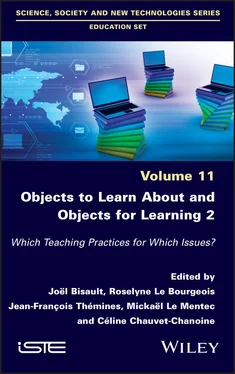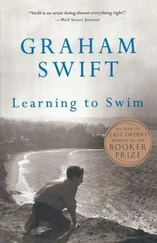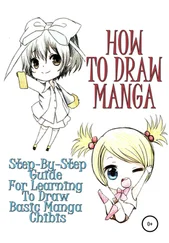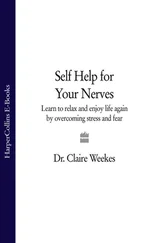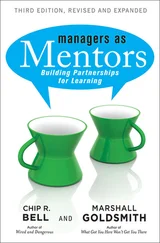Table 1.8. Frequency of occurrence for the most precisely identified points of reference
| No. |
Point of Reference |
Frequency |
| 2 |
Eiffel Tower |
7 |
| 1 |
Tower of Pisa |
6 |
| 3 |
Statue of Liberty |
6 |
| 12 |
Hollywood |
6 |
| 8 |
Kangaroo |
5 |
| 4 |
Amazon forest |
2 |
| 11 |
Burj Khalifa Tower |
2 |
| 14 |
Penguin |
2 |
| 15 |
Statue of Jean Bart |
2 |
| 9 |
Kiwi |
1 |
| 15 |
Lascaux Caves |
1 |
| 5 |
Dumont d’Urville Station |
1 |
| 6 |
Easter Island statues |
1 |
Was there also some overload for pupils, a threshold past which they could add no more? The results of the six most precise identifications in Table 1.7must be complemented by the overall average, which struggled to reach 50%. During the March evaluation, the pupils got an average of 42% right on the maps, compared to 43% for the tables; in May, the percentage increased to 48% for the maps and 49% for the tables. Identification of maps was therefore slightly better. Improvement, despite a constant volume of work on the 24 points of reference between March and May, was also limited. These averages obviously masked wide gaps between pupils with grades approaching 100%, for whom it would have been possible to add more, and others who had practically not participated in the process.
The object, although different from computers in the freedom of content creation and the manipulation with which it is associated, remains engraved in some pupils’ minds as a purely academic tool, without achieving the status of a didactic tool. Finally, it should be pointed out that the classroom in which this experiment occurred was particularly outdated (no curtains, no video projector) and therefore not well suited for viewing landscape photos, satellite images or virtual globes, which would have provided support for this process from time to time.
The aim of this study was to establish the spatial points of reference necessary for learning geography using manipulative techniques while only making the learning of these points of reference a part of this process and leaving room for the potential to analyze the discipline
The process seemed to be satisfactory, since the pupils played the game by spontaneously suggesting points of reference and by being responsive to relaunches and to the teacher’s redirection. The encounter between the design, production and manipulation of these points of reference made it possible to imbue them with an interesting operationality applied through a collective dimension associated with group learning and display.
Nevertheless, the results of the evaluation periods show that the object remains imperfect, precisely because its form, connected to a representation of space, which creates a variety of constraints that have been mentioned above (segmentation of shapes, superposition, juxtaposition, scale).
It is thus a tool to be perfected, certainly, but also a method that could constitute a foundation and a source of inspiration for teachers, particularly those in elementary school, for whom the subject is of particular interest. Reducing the time spent learning points of reference in geography in order to leave time for an analytic dimension of the discipline is a challenge; creating a list of spatial points of reference without having the list beforehand is another challenge. Whether pupils know how to find the United States using New York City as opposed to Washington DC is not an issue once they can correctly locate the country. If they find locations using monuments and animals rather than other classifiers, why not? They will have the time to refine their knowledge in middle school, high school and after school life.
Finally, it might be useful to dig deeper with regard to the layout of the classroom. In the framework of “learning the geography of spaces”, the fact of moving from wall maps that are infrequently or never looked at to removable, changing maps that the pupils can manipulate can contribute to the discovery of “the little-known morphology of situated objects, adjustable devices, and deployed networks, which is emerging and which demands to be inventoried” (Thémines and Le Guem 2020).
Audigier, F. and Tutiaux-Guillon, N. (2004). Regards sur l’histoire, la géographie et l’éducation civique à l’école élémentaire . INRP, Paris.
Baudinault, A. (2017). Géo-graphies en mouvements. Pour une ethnographie des savoirs géographiques à l’école élémentaire. PhD thesis, Lumière University Lyon 2, Lyon.
Bavoux, J.-J. and Chapelon, L. (2014). Dictionnaire d’analyse spatiale . Armand Colin, Paris.
Brunet, R., Ferras, R., Théry, H. (2005). Les mots de la géographie. Dictionnaire critique . La Documentation française, GIP Reclus, Paris.
Charlet, M. (2011). Au brevet : repères spatiaux ou jeu a-géographique. M@ppemonde , 102 [Online]. Available at: https://mappemonde-archive.mgm.fr/num30/mois/moi11202.html.
Chevalier, J.-P. (1997). Quatre pôles dans le champ de la géographie ? Cybergeo: European Journal of Geography [Online]. Available at: http://journals.openedition.org/cybergeo/6498.
Chevalier, J.-P. (2016). La mémorisation et la géographie scolaire (depuis le XVIIIe siècle).
Colloquium Mémoire et manuels scolaires , Les Archives départementales de l’Hérault, December 8 and 9, Montpellier.
Clerc, P. (2002). Les villes de la culture scolaire en géographie. Mappemonde , 65, 34–38 [Online]. Available at: http://www.mgm.fr/PUB/Mappemonde/M102/Clerc.pdf.
Hugonie, G. (2002). Erreurs et traitement des erreurs dans les cours de géographie. L'information géographique , 66(4), 351–359.
Jacob, F. and Servais, E. (2017). Le jeu en contexte scolaire : un outil au service du renouveau didactique de la géographie ? Sciences du jeu [Online]. Available at: http://journals.openedition.org/sdj/880.
Labinal, G. (2012). Quelle didactique de la géographie. In Géographies. Epistémologie et histoire des savoirs sur l’espace , Clerc, P. (ed.). SEDES, Paris.
Leroux, X. (2012). Compléments des programmes de géographie de l’élémentaire : valait-il mieux jamais que si tard ? Cybergeo: European Journal of Geography [Online]. Available at: http://journals.openedition.org/cybergeo/25131.
Leroux, X. and Le Bourgeois, R. (2020). Comprendre les préoccupations des enseignants du primaire en histoire et géographie à partir d’un forum. In Chercher ensemble : approches didactiques , Cohen-Azria, C., Dias-Chiaruttini, A., Souplet, C. (eds). Presses Universitaires de Bordeaux, Bordeaux.
Leroux, X. and Verherve, M. (2014). “Ma petite géographie” ou la fabrique de la représentation des lieux chez de jeunes élèves. M@ppemonde , 113 [Online]. Available at: http://mappemonde.mgm.fr/num41/articles/art14101.html.
Mérenne-Schoumaker, B. (2012). Didactique de la géographie. Organiser les apprentissages . De Boeck, Brussels.
Mousseau, M.-J. and Pouettre, G. (1999). Histoire-géographie, sciences économiques et sociales. In Un transfert de connaissances des résultats d’une recherche à la définition de contenus de formation en didactique , Colomb, J. (ed.). INRP, Paris.
Читать дальше
